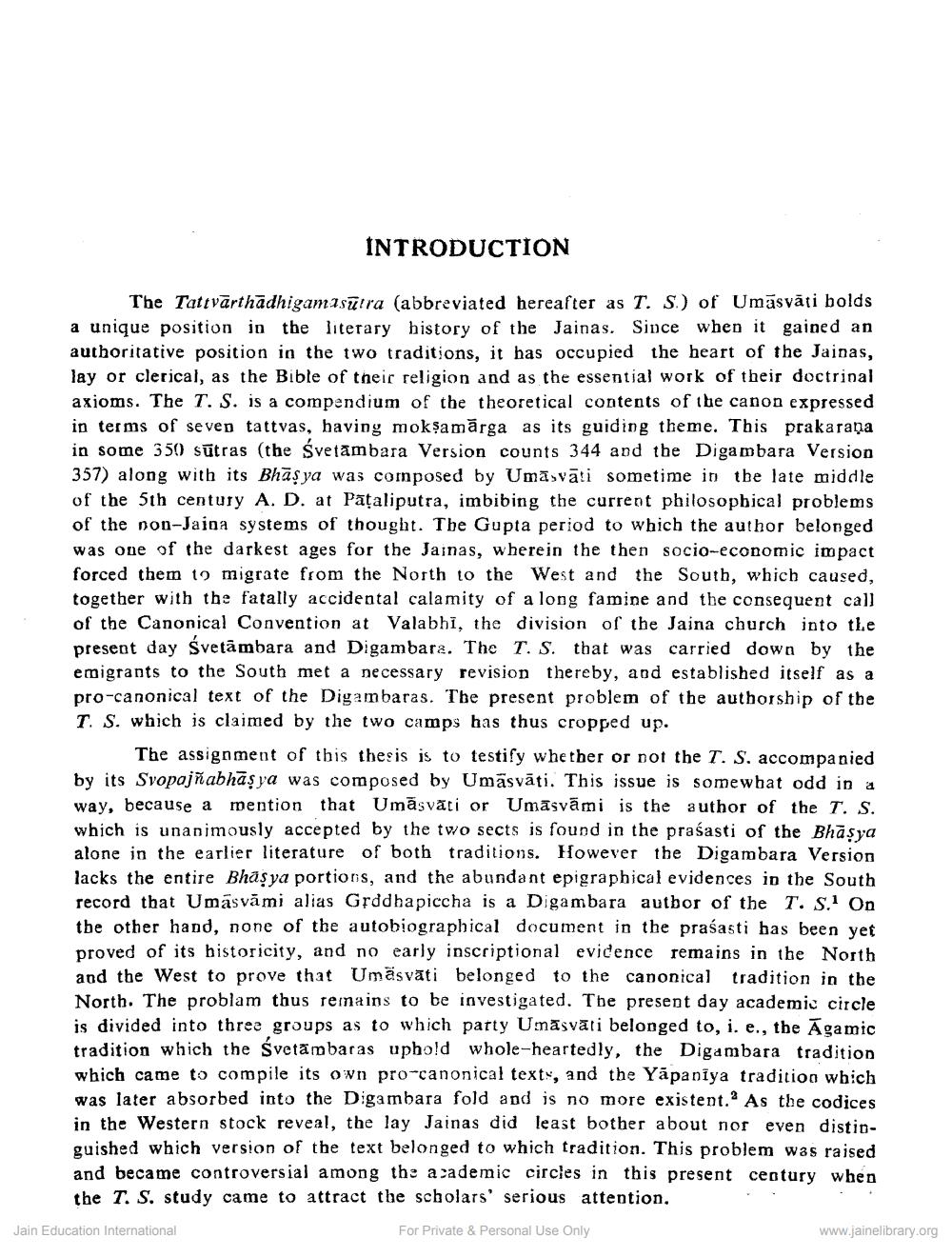________________
INTRODUCTION
The Tattvārthādhigamisutra (abbreviated hereafter as T. S) of Umāsvāti bolds a unique position in the literary history of the Jainas. Since when it gained an authoritative position in the two traditions, it has occupied the heart of the Jainas, lay or clerical, as the Bible of their religion and as the essential work of their doctrinal axioms. The T. s. is a compendium of the theoretical contents of the canon expressed in terms of seven tattvas, having mokşamārga as its guiding theme. This prakarana in some 350 sūtras (the Svetambara Version counts 344 and the Digambara Version 357) along with its Bhāşya was composed by Umāsvāti sometime in the late middle of the 5th century A. D. at Pataliputra, imbibing the current philosophical problems of the non-Jajoa systems of thought. The Gupta period to which the author belonged was one of the darkest ages for the Jainas, wherein the then socio-economic impact forced them to migrate from the North to the West and the South, which caused, together with the fatally accidental calamity of a long famine and the consequent call of the Canonical Convention at Valabhi, the division of the Jaina church into the present day śvetāmbara and Digambara. The T. S. that was carried down by the emigrants to the South met a necessary revision thereby, and established itself as a pro-canonical text of the Digambaras. The present problem of the authorship of the T. S. which is claimed by the two camps has thus cropped up.
The assignment of this thesis is to testify whether or not the T. S. accompanied by its Svopajñabhāşya was composed by Umāsvāti. This issue is somewhat odd in a way, because a mention that Umāsvāti or Umāsvāmi is the author of the T. S. which is unanimously accepted by the two sects is found in the praśasti of the Bhasya alone in the earlier literature of both traditions. However the Digambara Version lacks the entire Bhasya portions, and the abundant epigraphical evidences in the South record that Umāsvāmi alias Grddha piccha is a Digambara autbor of the T. s.' On tbe other hand, none of the autobiographical document in the prasasti has been yet proved of its historicity, and no early inscriptional evidence remains in the North and the West to prove that Umäsvāti belonged to the canonical tradition in the North. The problam thus reinains to be investigated. The present day academic circle is divided into three groups as to which party Umāsvāti belonged to, i. e., the Āgamic tradition which the Svetambaras uphold whole-heartedly, the Digambara tradition which came to compile its own pro-canonical texts, and the Yāpaniya tradition which was later absorbed into the Digambara fold and is no more existent. As the codices in the Western stock reveal, the lay Jainas did least bother about nor even distioguished which version of the text belonged to which tradition. This problem was raised and became controversial among the academic circles in this present century when the T. S. study came to attract the scholars' serious attention,
Jain Education International
For Private & Personal Use Only
www.jainelibrary.org




